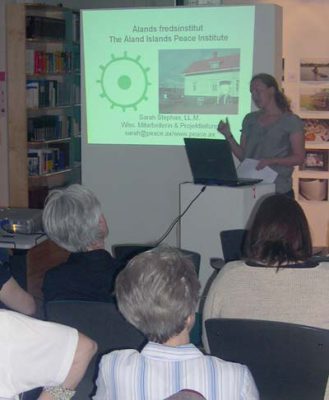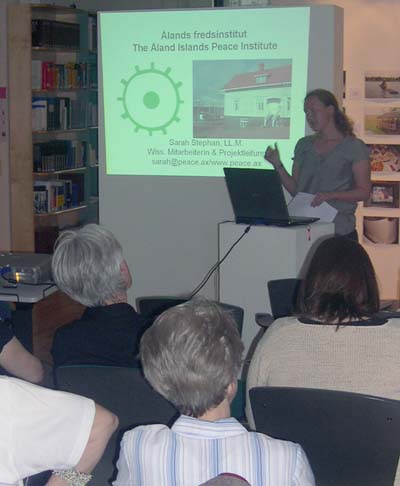Although the Åland example is discussed intensively on Åland and in many regions with similar characteristics, the attention it has received in other parts of Europe is rather sporadic. However, similarities exist with many EU member states, not the least between Åland and the German Bundesländer in the extent of their legislative powers. It was thus a great opportunity for the Åland Islands Peace Institute’s researcher Sarah Stephan to present and discuss the Åland example in Germany’s capital Berlin.
The seminar “European integration vs. regional diversity” on June 7th 2010, organized by the Berlin-based Finland-Institute, attracted an audience of about 30 persons, many of whom were regular visitors of the Nordic countries. They had the opportunity to discover what lies behind the term “the Åland example” – a special status under public international law made up of three main components, namely the demilitarization and neutralization of the archipelago, the broad political autonomy of the Åland government and the distinguished protection of the Swedish language and culture of the Ålanders. Modern perspectives and challenges to the demilitarization and classic instruments of Ålandic autonomy and minority protection such as the right to domicile and language policies were discussed with great interest just as the applicability of the Åland example to ongoing conflicts with autonomy implications in the world.
The seminar was part of a series of events entitled “Kennen Sie Åland? – Do you know Åland?” arranged by the Finland Institute in connection to Berlin’s long night of science. Information on the Åland Islands was made available to a large public on July 5th at the Institute for Northern European Studies of the Humboldt University Berlin, where Sarah Stephan gave a short presentation about the “Åland Islands through the eyes of a German”. The Nordic Institute on Åland contributed with the exhibition “ÜberAllTag” which features exhibits made by immigrant children on the Åland Islands and tell about their every-day lives in-between cultures. All events were well received and invite for a further exchange of ideas and experience beyond traditional contact areas.




